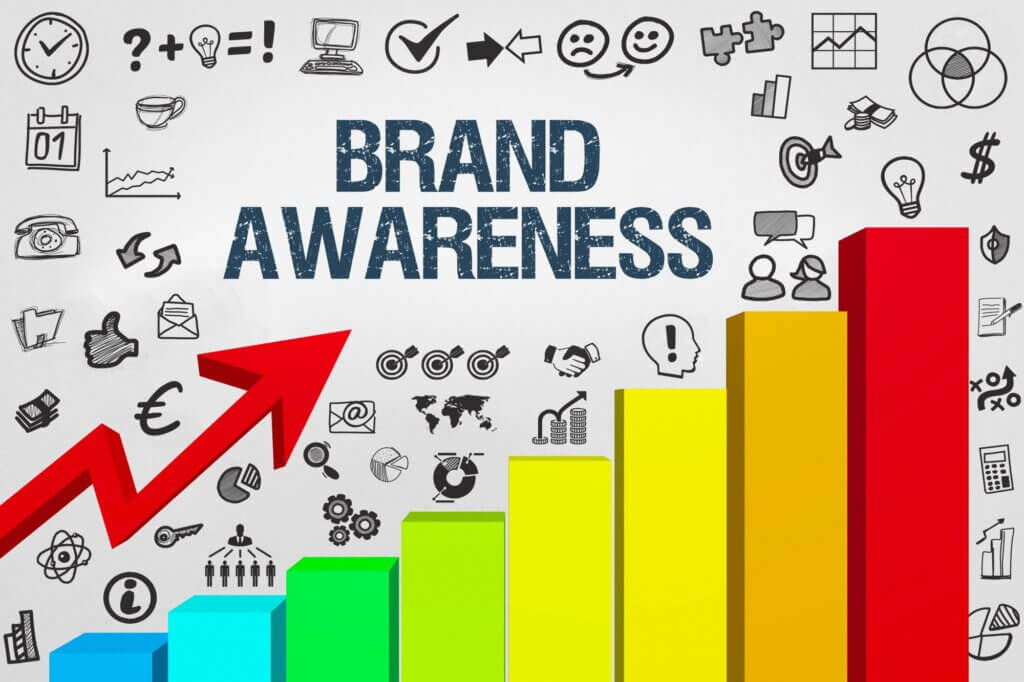Brand Awareness
Brand Awareness Definition
Brand awareness refers to how consumers can recognize and recall a brand. It is a crucial metric for businesses, as it indicates how well a brand is established in the marketplace and how likely it is to be considered by consumers when making purchasing decisions.
Importance of Brand Awareness:
- It helps to establish brand recognition and recall in the minds of consumers
- Increases the likelihood that consumers will consider a brand when making purchasing decisions
- Improves the effectiveness of marketing and advertising efforts
- Enhances customer loyalty and repeat business
- Enhances the brand’s perceived value in the marketplace
- It helps to protect the brand from the competition
Measuring Brand Awareness:
- Surveys and Questionnaires: Surveys and questionnaires can directly measure brand awareness by asking consumers about their familiarity and recognition of a brand.
- Brand Recall and Recognition Tests: These tests measure how well a consumer can recall or recognize a brand from memory, typically after exposure to a list of brand names or logos.
- Social Media Metrics: Social media metrics such as likes, shares, and mentions can provide an indirect measure of brand awareness, as they indicate how often a brand is being talked about online.
Building Brand Awareness:
- Advertising and Promotion: Advertising and promotion are essential to building brand awareness. This can include traditional forms of advertising, such as television and print ads, as well as digital advertising, such as social media ads and search engine marketing.
- Public Relations and Media Relations: Public relations and media relations can help to build brand awareness by securing positive coverage for a brand in the press and other media outlets.
- Influencer Marketing: Influencer marketing involves working with famous social media personalities to promote a brand to their followers.
- Consistency and Repetition: Consistency and repetition in branding efforts can help to build brand awareness by ensuring that a brand message is seen and heard by consumers multiple times.
Increasing Brand Awareness:
- Identifying Target Audience: Identifying the target audience is crucial for building brand awareness. By understanding the target audience’s demographics, psychographics, and behavior patterns, a brand can tailor its messaging and marketing efforts to reach them effectively.
- Building a Strong Brand Identity: A strong brand identity, including a unique logo, color scheme, and messaging, can help to increase brand awareness by making a brand more easily recognizable and memorable.
- Creating a Unique Value Proposition: A unique value proposition is a particular benefit or solution a brand offers its customers. Communicating this can help increase brand awareness by differentiating a brand from its competitors.
- Leveraging Word-of-Mouth Marketing: Word-of-mouth marketing, or recommendations from friends and family, is one of the most potent forms of marketing. By providing excellent customer service and creating a positive brand experience, a brand can encourage customers to spread the word about its products or services.
In conclusion, brand awareness is a crucial metric for any business. It helps establish brand recognition and recall, improves the effectiveness of marketing and advertising efforts, enhances customer loyalty, and repeats enterprise. Building brand awareness requires a combination of different marketing strategies, such as advertising, public relations, influencer marketing, and consistency in branding efforts. Additionally, understanding the target audience, creating a solid brand identity, offering a unique value proposition, and leveraging word-of-mouth marketing can help to increase brand awareness.
Measuring Brand Awareness
Measuring brand awareness is crucial for businesses to understand how well-established their brand is in the marketplace and determine their marketing efforts’ effectiveness. Several methods for measuring brand awareness include surveys and questionnaires, brand recall and recognition tests, and social media metrics.
Surveys and Questionnaires:
One of the most direct ways to measure brand awareness is through surveys and questionnaires. These can be distributed to a sample of consumers and ask questions about their familiarity and recognition of a brand. Surveys can be administered online, by phone, or in person. They can also be targeted to specific demographics or consumer segments to get more detailed information.
Brand Recall and Recognition Tests:
Another way to measure brand awareness is through brand recall and recognition tests. These tests measure how well a consumer can recall or recognize a brand from memory, typically after exposure to a list of brand names or logos. When prompted with a product or service category, brand recall tests measure how well a consumer can place a brand name or logo. On the other hand, brand recognition tests measure how well a consumer can recognize a brand name or logo when presented with a list of brand names or logos.
Social Media Metrics:
Social media metrics such as likes, shares, and mentions can indirectly measure brand awareness. The number of likes, shares, and mentions a brand receives on social media platforms such as Facebook, Twitter, and Instagram can indicate how often a brand is being talked about online. The number of brand followers on these platforms can also measure brand awareness.
In conclusion, measuring brand awareness is essential to understanding a brand’s position in the marketplace and determining the effectiveness of marketing efforts. Surveys and questionnaires, brand recall and recognition tests, and social media metrics are all effective methods for measuring brand awareness. By combining these methods, businesses can comprehensively understand their brand awareness and make data-driven decisions to improve it.
Building Brand Awareness
Building brand awareness is essential to establishing a brand in the marketplace and making it more likely to be considered by consumers when purchasing. There are several strategies that businesses can use to build brand awareness, including advertising and promotion, public relations and media relations, influencer marketing, and consistency and repetition.
Advertising and Promotion:
Advertising and promotion are essential, essentially brand awareness. This can include traditional forms of advertising, such as television and print ads, as well as digital advertising, such as social media ads and search engine marketing. Advertising allows businesses to reach a broad audience and convey their brand messaging to potential customers. Digital advertising, such as social media ads and search engine marketing, can target specific demographics and consumer segments, making it more effective in reaching the intended audience.
Public Relations and Media Relations:
Public relations and media relations can help to build brand awareness by securing positive coverage for a brand in the press and other media outlets. This can include press releases, media events, and product launches. Public and media relations can help build credibility for a brand and position it as an industry leader.
Influencer Marketing:
Influencer marketing involves working with famous social media personalities to promote a brand to their followers. This can include sponsored posts, product reviews, and brand mentions on social media platforms. Influencer marketing can be particularly effective in building brand awareness among younger generations and specific consumer segments.
Consistency and Repetition:
Consistency and repetition in branding efforts can help to build brand awareness by ensuring that a brand message is seen and heard by consumers multiple times. This can include consistent branding across all marketing materials, such as advertisements, website, and social media platforms, and consistent messaging across all customer touchpoints, such as customer service and sales.
In conclusion, building brand awareness is essential to establishing a brand in the marketplace and making it more likely to be considered by consumers when purchasing. Advertising and promotion, public relations and media relations, influencer marketing, consistency, and repetition are all effective strategies for building brand awareness. By combining these strategies, businesses can increase their brand’s visibility and credibility and position themselves as industry leader.
Increasing Brand Awareness
Increasing brand awareness is essential to making a brand more visible and memorable to consumers. There are several strategies that businesses can use to increase brand awareness, including identifying the target audience, building a solid brand identity, creating a unique value proposition, and leveraging word-of-mouth marketing.
Identifying Target Audience:
Identifying the target audience is crucial for building brand awareness. By understanding the target audience’s demographics, psychographics, and behavior patterns, a brand can tailor its messaging and marketing efforts to reach them effectively. This can include identifying specific consumer segments, such as age, gender, income, and interests, and tailoring advertising and marketing messages to appeal to these segments.
Building a Strong Brand Identity:
A strong brand identity, including a unique logo, color scheme, and messaging, can help to increase brand awareness by making a brand more easily recognizable and memorable. This can include creating a consistent visual identity across all marketing materials and customer touchpoints, such as advertisements, websites, and social media platforms.
Creating a Unique Value Proposition:
A unique value proposition is a particular benefit or solution a brand offers its customers. Communicating this can help increase brand awareness by differentiating a brand from its competitors. This can include highlighting the brand’s unique features, services, or customer experience that sets it apart from others.
Leveraging Word-of-Mouth Marketing:
Word-of-mouth marketing, or recommendations from friends and family, is one of the most potent forms of marketing. By providing excellent customer service and creating a positive brand experience, a brand can encourage customers to spread the word about its products or services. This can include incentives or referral programs encouraging customers to share the brand with friends and family.
In conclusion, increasing brand awareness is essential to making a brand more visible and memorable to consumers. Identifying the target audience, building a solid brand identity, creating a unique value proposition, and leveraging word-of-mouth marketing are all effective strategies for increasing brand awareness. By combining these strategies, businesses can reach the right audience, differentiate themselves from competitors, and encourage positive word-of-mouth recommendations.
Conclusion
Brand awareness is a crucial metric for any business. It helps establish brand recognition and recall, improves the effectiveness of marketing and advertising efforts, enhances customer loyalty, and repeatsenterprises. Building brand awareness requires a combination of different marketing strategies, such as advertising, public relations, influencer marketing, and consistency in branding efforts. Additionally, understanding the target audience, creating a solid brand identity, offering a unique value proposition, and leveraging word-of-mouth marketing can help to increase brand awareness.
Recap of Key Points:
- Brand awareness refers to how consumers can recognize and recall a brand.
- Brand awareness can be measured through surveys, questionnaires, brand recall and recognition tests, and social media metrics.
- Brand awareness can be built through advertising and promotion, public relations and media relations, influencer marketing, consistency, and repetition.
- Increasing brand awareness can be done by identifying the target audience, building a solid brand identity, creating a unique value proposition, and leveraging word-of-mouth marketing.
Future of Brand Awareness: The end of brand awareness is constantly evolving as new technologies and marketing channels become available. For example, with the rise of social media and e-commerce, businesses are increasingly turning to digital marketing strategies to build brand awareness. Additionally, with the increasing use of AI and big data, companies can gain deeper insights into consumer behavior and tailor their brand awareness efforts more effectively.
Recommended Further Reading:
- “Contagious: How to Build Word of Mouth in the Digital Age” by Jonah Berger
- “Influencer: Building Your Personal Brand in the Age of Social Media” by Brittany Hennessy
- “Building a StoryBrand: Clarify Your Message So Customers Will Listen” by Donald Miller
- “The Power of Branding” by Tim Calkins
- “Building a Brand That Matters: How to Create a Business that Will Stand the Test of Time” by Nick Westergaard
In conclusion, Brand awareness is an essential aspect of any business; it helps establish a brand in the marketplace, increase its visibility, and make it more likely to be considered by consumers when purchasing decisions. By combining different strategies, businesses can increase brand awareness and gain a competitive edge in the marketplace. The future of brand awareness is constantly evolving; companies should stay updated and adapt to new technologies and marketing channels to remain relevant and effective in building brand awareness.
F.A.Q
What is brand awareness, and why is it important?
Brand awareness refers to how consumers can recognize and recall a brand. It is a crucial metric for businesses, as it indicates how well a brand is established in the marketplace and how likely it is to be considered by consumers when making purchasing decisions.
Brand awareness is essential for several reasons:
- It helps to establish brand recognition and recall in the minds of consumers
- Increases the likelihood that consumers will consider a brand when making purchasing decisions
- Improves the effectiveness of marketing and advertising efforts
- Enhances customer loyalty and repeat business
- Enhances the brand’s perceived value in the marketplace
- It helps to protect the brand from the competition
In summary, brand awareness is essential because it helps businesses establish their brand in the marketplace, increase visibility and make it more likely to be considered by consumers when purchasing decisions. It also enhances customer loyalty, repeats business, and protects the brand from the competition.
How Do You Create a Brand Awareness Campaign?
Creating a brand awareness campaign involves several steps, including:
- Defining the campaign goals and objectives: Identify the specific goals and objectives, such as increasing brand recognition or boosting sales.
- Identifying the target audience: Understand the target audience’s demographics, psychographics, and behavior patterns to tailor the campaign messaging and tactics to reach them.
- You are conducting market research: Research the competition and the current market trends to identify the strengths and weaknesses of your brand and how to differentiate it from competitors.
- Creating a strong brand identity: Develop a consistent visual identity for the brand, such as a logo, color scheme, and messaging, to make it more easily recognizable and memorable.
- Developing a campaign strategy: Determine the tactics and channels that will be used to reach the target audience, such as advertising, public relations, influencer marketing, and word-of-mouth marketing.
- Implementing the campaign: Execute the campaign using the chosen tactics and channels, such as running ads, issuing press releases, and working with influencers.
- It measures and evaluates the campaign: Monitor its performance using metrics such as brand recall, website traffic, and sales to determine its effectiveness and adjust as needed.
- Continuously Improving: Use the collected feedback and data to improve the campaign and adjust to achieve better results.
In summary, creating a brand awareness campaign requires identifying the campaign’s goal, understanding the target audience, conducting market research, developing a solid brand identity, developing a campaign strategy, implementing it, monitoring its performance, and continuously improving it.






